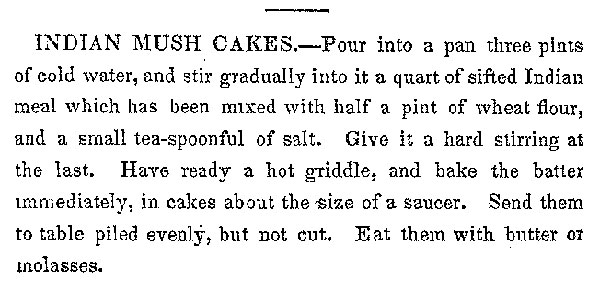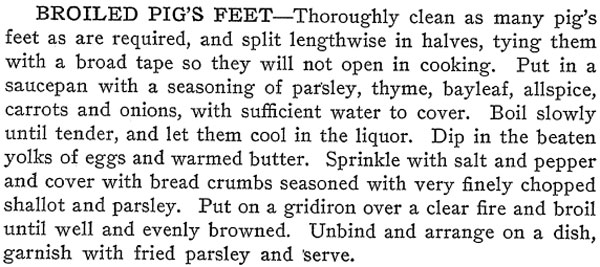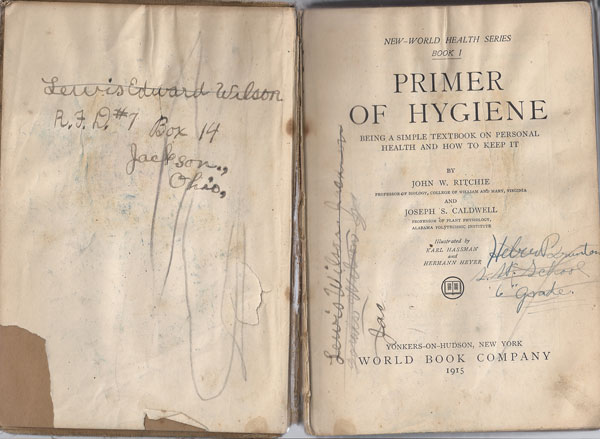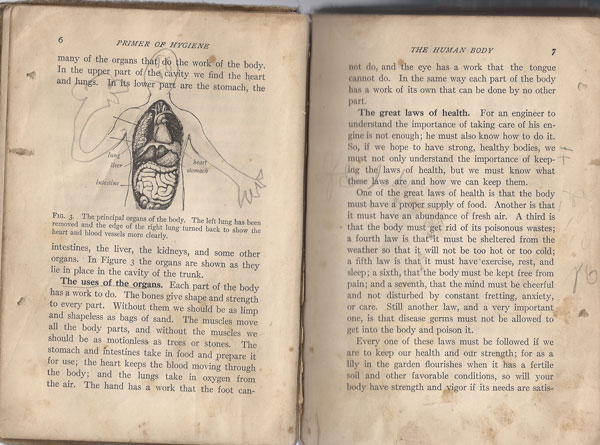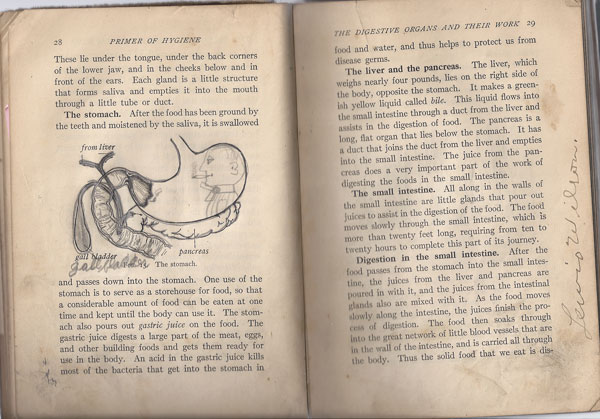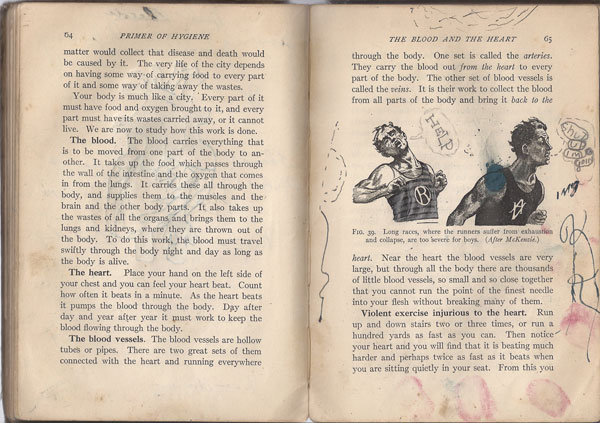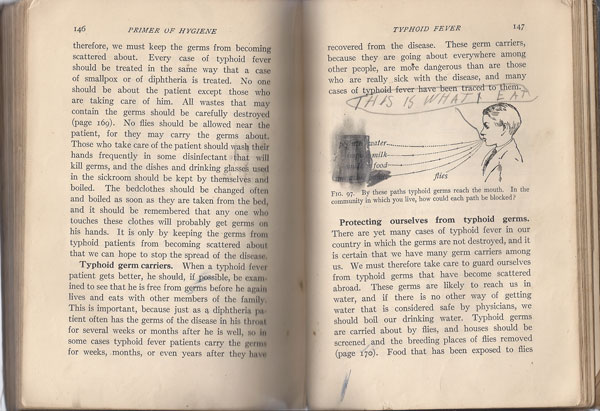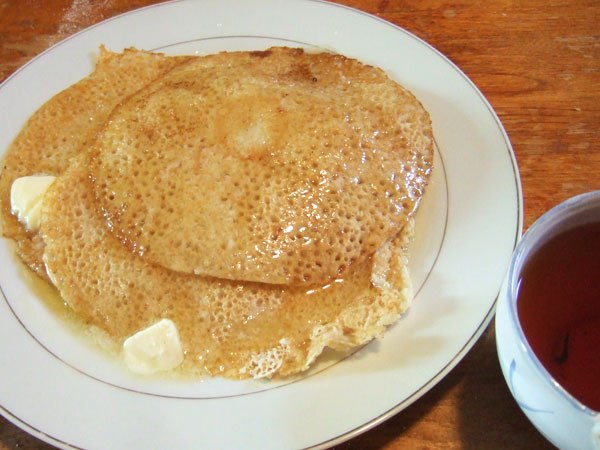 George Washington’s breakfast: Three corn meal pancakes and three cups of tea.
George Washington’s breakfast: Three corn meal pancakes and three cups of tea.
“He rose before sunrise, always wrote or read until seven in summer or half past seven in the winter.  His breakfast was then ready–he ate three small mush cakes swimming in butter and honey, and drank three cups of tea without cream.”
–Nelly Custis Leiws, Washington’s step-granddaughter
(as republished in The Founding Foodies by Dave DeWitt)
I have a very specific obsession with menus; it’s not just the historic recipes I’m fascinated with, but the order in which people ate them, the occassion, Â and the time of day. Â I hope that by consuming foods in the same way, I can understand something about another way of life. Â After I read the above qoute about George Washington’s morning routine, it prompted me to step into his shoes and consume his breakfast.
Last night, I texted my boyfriend: Â “This will seem like a strange reqeust, but I need to get up at 6am. Â Im trying to emulate george washington.”
To which my boyfriend promptly responded: “K sweets. Â Sounds like a good idea. He was pretty. Â Bad ass.”
The qoute from Washingotn’s step-grandaughter came from The Founding Foodies by Dave DeWitt, a new publication on early Americans who affected what we eat today.  Washington was a really badass farmer:  he turned a huge profit each year, likely due to the fact that he was always ready to try a new technique or a new trade, adding a grist mill and a distillery to his property late in life.  Having  visited his home two years ago, I enjoyed enivsioning him awake in the early hours of the morning, quietly reading, thinking, or penning letters, then sitting down to breakfast.
I set my alarm for 5:45 and slept through it. Â Luckily, boyfriend Brian had set his and physcially rolled me out of bed at 6. Â I have trouble getting up in the morning, which is unfortunate because I actually love the mornings. Â Quiet and restful, being up before everyone else settles my mind, and gives me a headstart on the day. Â I installed myself at the kitchen table, wrote a few emails, and read: World’s Largest Stove Destroyed–By Fire; A Feast for the Eyes; and The Ladies of the 17th Century Were Way More Hardcore than You. Â Then, it was time to attack my breakfast.
Unlike Washington, I do not have slaves. Â I cleaned my own kitchen, brewed my own tea, and mixed up my own batter for mush cakes:
I scaled this recipe down, mixing 2 cups cold water with 1 1/3 cups cornmeal. Â I used a sifter to add the cornmeal to the water, while whisking constantly. Â This ended up being a great technique, as it did a good job preventing lumps. Â Last, I added 1/3 cup whole wheat flour and a pinch of salt.
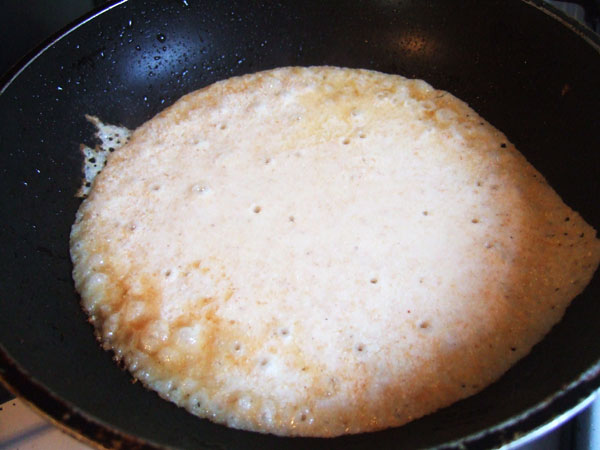 When bubbles start to appear, it’s time to flip!
When bubbles start to appear, it’s time to flip!
The batter was quite thin, so I decided to use a small, non-stick skillet. Â Butter went in the skillet, followed by enough batter to cover the bottom of the pan. Â When bubbles began to appear on the surface, I flipped it (with confidence) and cooked the other side until brown. Â Then, with a plate stacked high, I tucked slivers of butter in between the layers and covered the whole thing over with warm honey.
I had been concerned about the lack of leavning in the pancakes, but although they weren’t light and fluffy, they weren’t dense either. Â They had a great, rugged texture, and pretty much anything “swimming” in butter is gonna taste pretty good.
We don’t really know if Nelly Custis’ account of Washington’s breakfast is factual, or if she just said it to make him sound more austere and awesome, unlike Ben Franklin, who “…ate an inordinate breakfast, four dishes of tea with cream, and one or two buttered toasts, with slices of hung beef…” (his own words). Â But I have to admit, I’m feeling pretty bad ass right now (alot like this). I sat and munched my mush cakes, thinking about George, and how different his mornings may have been. Â I have to admit, he may be displacing Thomas Jefferson as my favorite founding father.
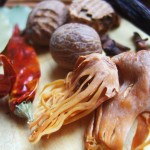 Have you ever noticed that the names of Greenpoint’s streets bring to mind exotic locales? From Java to India, these Brooklyn roadways took their names from the distant countries that brought spices from the Far East to America’s shores. Once a major port for trading ships,Greenpoint can be used as a guidebook to explore the history of American food through flavor. When did American palates favor one spice over another and why? When did ships stop bringing mace and start carrying vanilla beans?
Have you ever noticed that the names of Greenpoint’s streets bring to mind exotic locales? From Java to India, these Brooklyn roadways took their names from the distant countries that brought spices from the Far East to America’s shores. Once a major port for trading ships,Greenpoint can be used as a guidebook to explore the history of American food through flavor. When did American palates favor one spice over another and why? When did ships stop bringing mace and start carrying vanilla beans?

